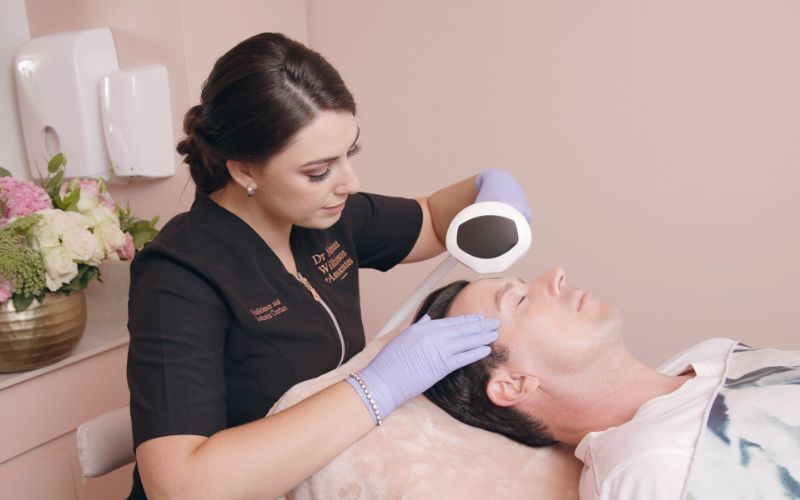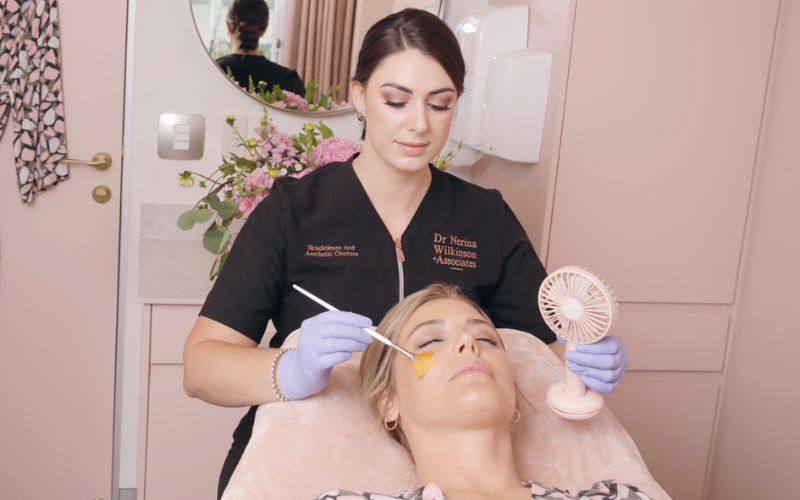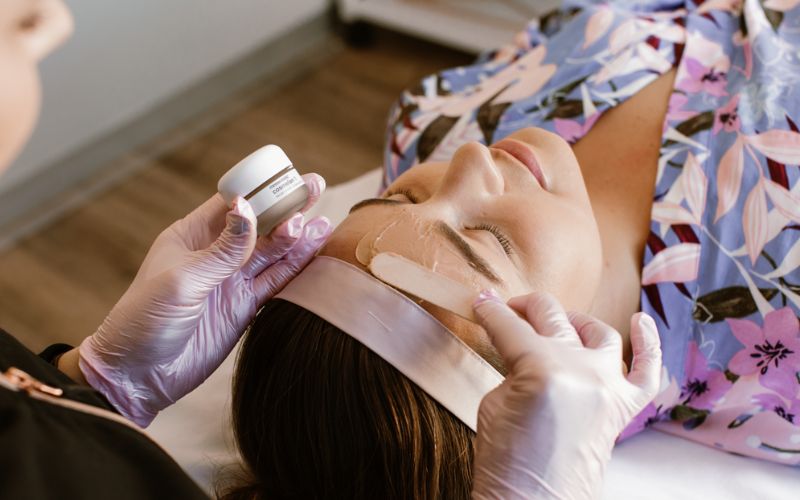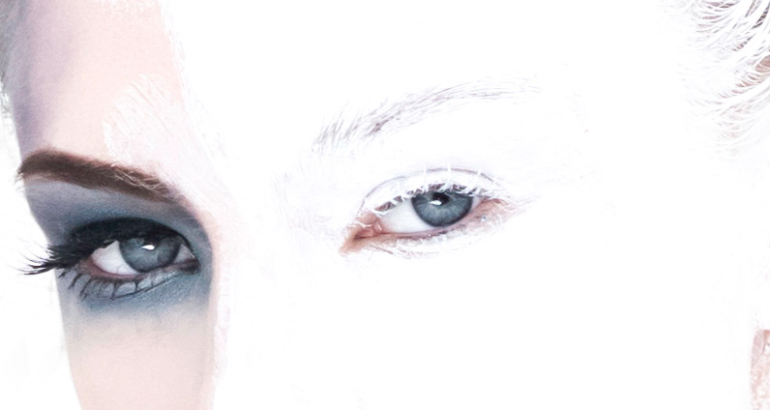by Skincare Specialist, Sammy Swart
Hey there, fellow sun-lovers, and sunscreen slackers! Let’s talk about something we’ve all experienced at some point: sun-damaged skin… You know, those pesky signs that appear after a few too many beach days or sun-soaked escapades.
Sun-damaged skin is a common concern that affects many individuals due to prolonged exposure to ultraviolet (UV) rays. Soon we will be delving into the topic of what sun damage is and how to reverse it. Now, don’t be afraid we’ve got your back (and your face) covered! We’re here to save your skin from UV-induced mischief.
By understanding the basics of sun damage, you can take proactive steps to protect your skin and maintain its health and appearance, so here is my ultimate guide to treating sun-damaged skin.
Table of contents
- UNDERSTANDING SUN DAMAGE
- WHAT IS SUN-DAMAGED SKIN?
- CAN SKIN RECOVER FROM SUN DAMAGE?
- THE CAUSES OF SUN DAMAGE
- SIGNS OF SUN DAMAGED SKIN
- PROFESSIONAL TREATMENTS FOR SUN DAMAGED SKIN
- HOW TO PREVENT SUN DAMAGE
- FINAL THOUGHTS ON SUN DAMAGED SKIN
UNDERSTANDING SUN DAMAGE
Yes, we’re getting scientific now. Sun-damaged skin refers to the negative effects caused by prolonged exposure to UV rays. It is often referred to as photoaging, photodamage, or solar damage. When UV light hits unprotected skin, it can lead to DNA changes at a cellular level, resulting in various signs of sun damage.
WHAT IS SUN-DAMAGED SKIN?
Think of it as “photoaging,” which is like the weathering of your skin by the sun’s harmful rays. You know those old leather boots in the back of your closet? That’s what we’re trying to avoid. Sun-damaged skin refers to the changes that occur in the skin due to prolonged exposure to UV radiation. Photoaging, caused by sun damage, manifests as various signs such as wrinkles, uneven pigmentation, and vascularity. The damage occurs when UVA and UVB rays penetrate the skin, causing cellular DNA damage.
CAN SKIN RECOVER FROM SUN DAMAGE?
Yes, skin can recover from sun damage. The recovery process depends on the severity of the damage and the area affected. Professional treatments and skincare regimens can help in reversing the signs of sun damage. Consulting with an experienced professional is crucial to determine the most appropriate treatment plan for individual needs.
THE CAUSES OF SUN DAMAGE
The primary cause of sun damage is exposure to UV light. Both UVA and UVB rays contribute to the development of sun damage, but what is the difference?
How does UVA damage the skin?
UVA, the “undercover villainous agent” of sun damage. It sneaks past your defenses and causes premature aging. UVA rays are present throughout the year and can penetrate clouds and glass, making them a constant threat to the skin. UVA light is responsible for long-term damage to the skin. It can penetrate the dermis and breaks down collagen and elastin fibers. The effects of UVA light are often not immediately visible, but they become apparent over time.
How does UVB damage the skin?
And then there’s UVB, the “burn baby burn” type of UV. It’s like a mischievous kid with a magnifying glass, just out to damage your skin’s DNA. UVB rays are most intense during the midday and summer months. UVB light primarily affects the outer layers of the skin and is responsible for sunburns. It directly damages the DNA of skin cells and can lead to the development of skin cancer. Short-term effects of UVB exposure include redness, inflammation, and sunburn.
SIGNS OF SUN DAMAGED SKIN
Sun-damaged skin exhibits various signs that become noticeable from the age of 35 onwards, though damage may start occurring earlier.
Uneven Pigmentation
Excessive sun exposure can cause melanocytes, the pigment-producing cells in the skin, to produce excessive amounts of pigment. This results in uneven pigmentation, seen as dark spots or patches, and can also cause the development of white spots.
Skin Vascularity
Sun exposure causes capillaries to dilate and move closer to the skin’s surface, resulting in a red appearance known as vascularity. Prolonged sun damage can lead to persistent redness and visible blood vessels.
Wrinkles and Sagging Skin
Sun damage contributes to premature aging, leading to the development of wrinkles and sagging skin. UVA rays break down collagen and elastin fibers, which are responsible for the skin’s elasticity and firmness.
So, how can we go about treating sun damaged skin?
PROFESSIONAL TREATMENTS FOR SUN DAMAGED SKIN
Various treatments are available to reduce the signs of sun-damaged skin. Consulting with a skincare professional before starting treatment is however essential to determine the most suitable treatment options based on the severity and location of the sun damage.
Here is a list of some of our top treatments when it comes to targeting or reversing signs of sun damage:
3D MD PRP (also known as the Dr Vampire)
Facial treatments such as our signature 3D MD PRP treatment can be effective in reversing the signs of sun damage. This treatment utilizes your body’s own platelet-containing growth factors to stimulate collagen, elastin, and Hyaluronic Acid production, promoting skin rejuvenation and repair.
The 3D MD PRP is recommended all year round as a healing and feeding treatment for the skin and to prevent long-term effects of sun damage in the skin due to inflammation.
Lumecca IPL (Intense Pulsed Light)
Lumecca Intense Pulsed Light (IPL) treatment is a powerful approach to address sun damage and a more even complexion with an instantly bright and healthy glow. IPL is a wide spectrum light emitted by a xenon flash tube producing calibrated pulsed light. The energy is absorbed by substances called chromophores (targets), contained in the skin. It targets pigmented and vascular lesions caused by sun damage, resulting in improved complexion and skin clarity.
Pigmented lesions: Light energy is absorbed by the pigmented lesion and converted to heat energy. This results in the pigment breaking up. The pigment then either desquamates (flakes) off the surface of the skin or is absorbed and removed by the lymphatic system, therefore, improving the appearance of sun damage and pigmented age spots.
Vascular lesions: The light energy turns into heat energy and results in the coagulation of the blood vessels. The coagulated blood is then absorbed and removed by the lymphatic system improving the appearance of redness and broken blood vessels.
Chemical Peels for Sun-Damaged Skin
Chemical Peels are an effective option for improving the texture and appearance of sun-damaged skin. They remove the outer damaged layers of the skin, revealing a fresher and smoother skin underneath.
There is a wide range of Chemical Peel solutions available to treat a wide variety of skin types and skin phototypes, so when it comes to chemical peel solutions for sun-damaged skin, there really is an effective solution available for everybody.
Cosmelan and Dermamelan by Mesoestetic
Cosmelan and Dermamelan are renowned depigmentation treatments that effectively address sun-induced pigmentation issues. They work by inhibiting the enzyme responsible for excess pigment production, leading to a more even complexion.
Cosmelan and Dermamelan have long been considered the gold standard when it comes to the treatment of hyperpigmentation and was designed to achieve incredible results after just one in-clinic treatment.
HOW TO PREVENT SUN DAMAGE
Prevention is key in protecting your skin from sun damage and the often dangerous (and unsightly) effects that follow. Preventing sun damage is also of utmost importance when it comes to maintaining your skin’s overall health. But how can we prevent sun damage?
Limit direct sun exposure to your skin
To reduce the risk of sun damage, it is crucial to limit direct sun exposure, especially during peak sunlight hours between 12-16:00. Seeking shade and utilizing protective measures such as umbrellas and canopies can help minimize exposure.
Apply SPF 50+ waterproof sunscreen regularly
Regular application of a broad-spectrum sunscreen with an SPF of 50 is vital in preventing sun damage. Choosing a sunscreen suitable for your skin type and reapplying it every two hours or after swimming or sweating is essential.
Invest in protective clothing
Wearing protective clothing, such as long-sleeved shirts, pants, wide-brimmed hats, and sunglasses with UV protection, can provide an additional layer of defense against UV rays.
Get regular skin checks with a professional
Regular skin checks with a skin care professional can help detect early signs of sun damage or other skin concerns. Seeking professional advice and guidance is essential for maintaining healthy skin.
FINAL THOUGHTS ON SUN DAMAGED SKIN
Understanding the basics of sun damage, its causes, signs, available treatments, and preventive measures is crucial for maintaining healthy skin. By taking proactive steps, such as seeking professional treatments, adopting a comprehensive skincare routine, and practicing sun-safe behaviours, you can protect your skin from sun damage and maintain its health and appearance for years to come. Remember to consult with a skincare professional (VISIA skin analysis) and get your treatment options tailored to your specific needs (Skin plan).
Remember to cherish those sunny days while keeping your skin safe from the sun’s mischievous rays. And if all else fails, a good hat and a splash of SPF can work wonders. Trust us, we’ve seen our fair share of sunburn mishaps!
So, here’s to healthy, sun-kissed skin and a lifetime of glowing memories, and embracing the sunshine responsibly!
And if you have any questions or need some expert advice, don’t hesitate to reach out to Dr. Nerina Wilkinson + Associates. We are here to guide you to your healthiest, most radiant skin ever!






